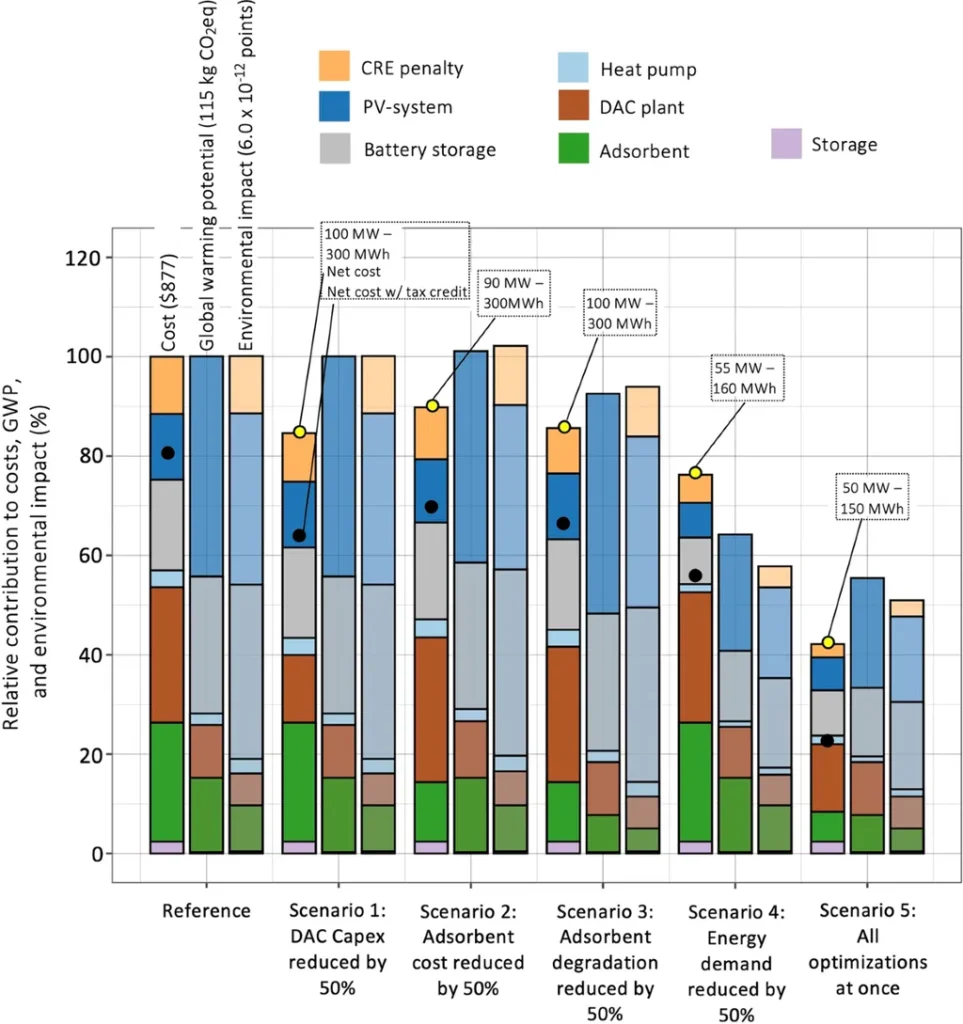In a significant stride towards decarbonizing emission-intensive industries, researchers have proposed an economically viable strategy for reducing the carbon footprint of carbon capture units. The study, led by Shashank Singh Rawat from the German Aerospace Center (DLR), introduces innovative high-temperature heat pump (HTHP) concepts that could reshape the future of carbon capture and storage (CCS) technologies.
The research, published in the journal *Carbon Capture Science and Technology*, addresses a critical challenge in current carbon capture methods: the reliance on fossil fuel-based thermal energy for solvent regeneration. This dependency undermines the overall emission reduction benefits of carbon capture. Rawat and his team have developed a solution that leverages available process waste heat, significantly reducing the need for external heat supply.
Using Aspen Plus™, the team simulated an industrial pilot carbon capture unit and integrated a conventional HTHP system employing hydrocarbons. This modification alone reduced the external heat demand by 27%, a substantial improvement achieved with minimal process changes. Rawat emphasized the importance of this finding: “Our approach demonstrates that even minor adjustments can yield significant reductions in emissions and costs, making carbon capture more viable for industrial applications.”
The study also explored more complex integration systems that could achieve total decarbonization of the heat supply, although at higher costs. This dual approach provides a flexible framework for industries to balance their decarbonization goals with economic constraints.
One of the most intriguing aspects of the research is the investigation into the role of carbon credits. The study highlights how carbon credits can serve as both a cost and revenue source, adding another layer of economic viability to the proposed solutions. Additionally, sensitivity analyses on process costs and emissions offer valuable insights for policymakers and technology providers.
Rawat’s team also discovered that minor modifications to the operating pressure in the regeneration column could increase heat demand and emissions but also permit the use of novel HTHP technologies. These technologies result in even lower process costs and emissions at high electrification levels. This finding underscores the potential for innovative heat pump technologies to drive down the costs and emissions of carbon capture processes.
The implications of this research are far-reaching. As industries worldwide strive to meet net-zero emissions targets, the need for efficient and cost-effective carbon capture technologies has never been greater. Rawat’s work offers a promising path forward, demonstrating that economic decarbonization is not only possible but also achievable with current technologies and minor modifications.
For the energy sector, this research could pave the way for widespread adoption of carbon capture technologies, particularly in industries that have historically been difficult to decarbonize. By reducing the reliance on fossil fuels for solvent regeneration, these innovative HTHP concepts could significantly lower the carbon footprint of industrial processes, making them more sustainable and environmentally friendly.
As the world continues to grapple with the challenges of climate change, research like this provides a beacon of hope. It shows that with the right innovations and a commitment to sustainability, we can make significant strides towards a cleaner, greener future.

